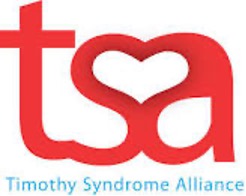Timothy Syndrome Alliance
Diseases covered:
- Familial Electrical Diseases
- Timothy syndrome
- Long QT syndrome
- Short QT syndrome
- Especially: Abnormal QT intervals (prolonged or, rarely, shortened) associated with an identified change in the gene CACNA1C
- Psychosocial Support
- CACNA1C Support Group
Aims and activities of the organization
CACNA1C is a gene that provides the code for a protein found in the walls of cells throughout the body. This protein manages the movement of calcium in and out of the cell, which is critical for many cells’ function. Changes to the gene can affect the protein’s structure and its ability to manage calcium movement, making it work more, less, or not at all. Variants in the gene are associated with CACNA1C-related disorders (CRD) including Timothy Syndrome (pathognomonic p.G406R protein change) and LongQT8 (non-syndromic cardiac only). As we identify more individuals with CACNA1C variants there is considerable variability in the phenotype (ranging from severely affected with serious cardiac events to apparently mildly affected with only a few features). These phenotypes are multi-system, but typically individuals present with autism spectrum disorder, developmental delay, prolonged cardiac QT interval, syndactyly/ hip dysplasia, hypotonia, epilepsy and hypoglycaemia.
Our mission is to improve the diagnosis, treatment and care of individuals with CACNA1C-related disorders (CRD), including Timothy Syndrome (TS) and LongQT8 (LQT8), and to support the families and carers of those diagnosed. We raise awareness among the general public, medical & research communities, promoting relevant research, connecting families with experts and researchers at TSA conferences and providing information and education on our website.
We have a strong family global support group offering emotional and practical support, helping to reduce feelings of isolation. We are driving research and clinical development with our global CACNA1C Community Registry and Scientific Advisory Board.
Contact https://timothysyndrome.org/contact-us/
More information timothysyndrome.org


